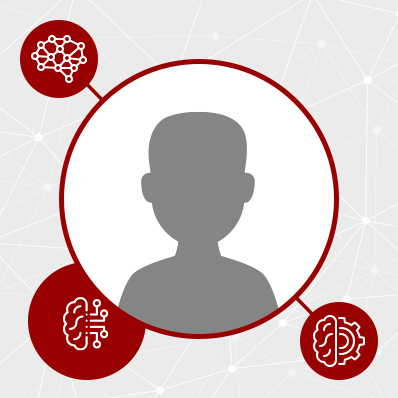Mather, Mara
Professor of Gerontology, Psychology, and Biomedical Engineering
The autonomic nervous system plays an underappreciated role in age-related change in the brain and cognition. But the sympathetic hub region in the brain (the locus coeruleus) is one of the first brain regions affected by Alzheimer’s disease pathology and deep sleep, a period of high parasympathetic activity, is critical for clearing out the potentially toxic proteins generated by the brain’s activity during the day (it is the aggregation of such proteins that leads to the hallmark plaques and tangles seen in Alzheimer’s disease). Our research is investigating how both sympathetic and parasympathetic function affect brain function and cognition in aging and how interventions that increase parasympathetic activity may enhance brain function in older adults.
Matho, Katherine
Assistant Professor of Pediatrics
How do developmental and genetic programs build brain circuits for complex behavior? My lab investigates this question by integrating developmental neuroscience, molecular genetics, and multi-scale circuit mapping to study cortical sensorimotor circuits underlying goal-directed actions and perception. Using interdisciplinary approaches, such as gene knockin mouse lines and single cell profiling, we examine how neuronal identity and connectivity emerge during development. Our goal is to uncover the molecular and developmental logic of circuit assembly in neurotypical development and how the key building blocks that make up the circuits—cell types—are disrupted in neurodevelopmental disorders. We hypothesize that a temporal patterning program during pregnancy specifies neuron subtype and wiring, shaping sensorimotor function in the mature brain.
McKemy, David
Professor of Biological Sciences
The McKemy laboratory studies the neurobiological basis of pain, focusing on general somatic sensations of pain, painful neuropathies associated with chronic injury and disease, and the mechanisms that lead to migraine headaches. The lab is also interested in how the microbiome alters general physiological functions that can lead to pain and other disorders.
Mel, Bartlett
Associate Professor of Biomedical Engineering
Our research involves the use of computer models to study brain function. Some of our goals are of a primarily scientific nature. For example, we use detailed biophysiical modeling to study synaptic integration in active dendritic trees, and explore how dendritic trees could contribute to the sensory and memory-related functions of nerve cells. Some of our work combines scientific and engineering goals. For example, we have modeled the complex computations carried out in the visual cortex that allow us to recognize objects with remarkable speed, accuracy, and robustness -- far beyond the technical state of the art. Our overarching goal is to use insights gained from this work to help in the construction of next-generation intelligent machines.
Moore, Jeffrey
Assistant Professor of Biological Sciences
Many mammals sense and affect their environment predominantly through innate motor programs for exploration, social interaction, and ingestion; yet, little is known about the neuronal circuits that control these motor programs. Our lab uses molecular, systems, and computational neurobiological techniques to identify specific brainstem motor control modules and to determine how higher-order brain structures engage these modules for innate behaviors.







